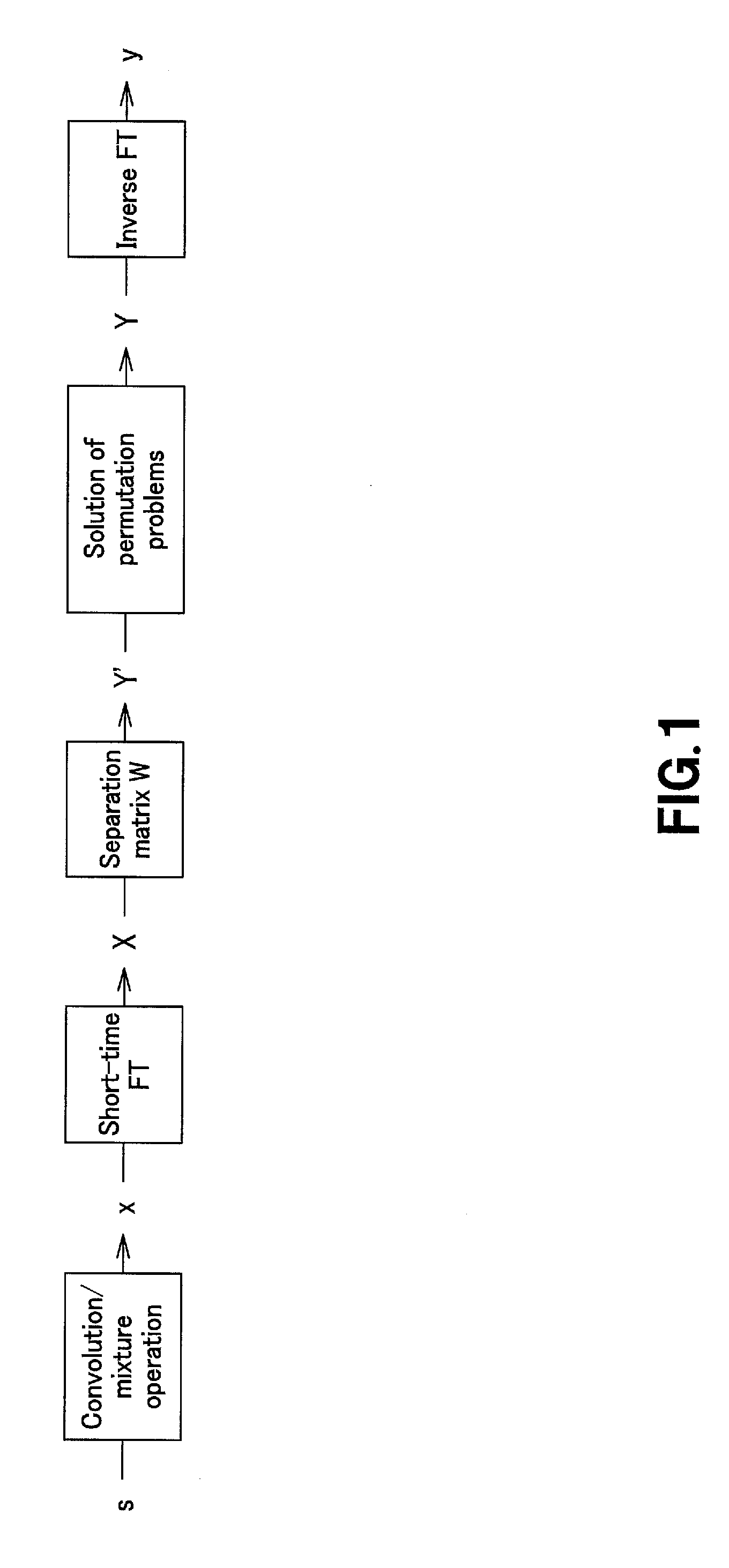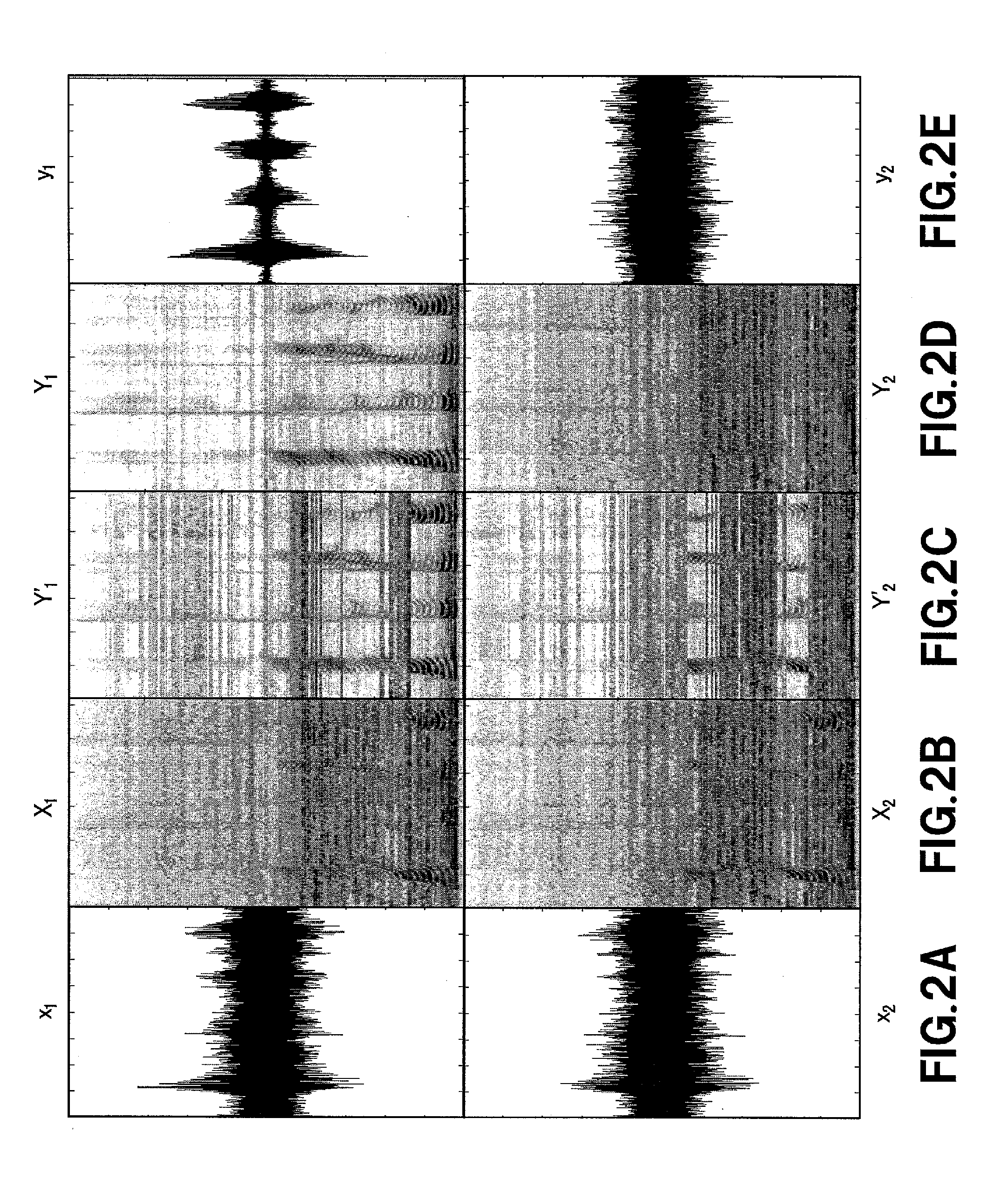Audio signal separation device and method thereof
a technology of audio signal and separation device, which is applied in the direction of speech analysis, instruments, etc., can solve the problems of inaccurate signal exchange, inability and inability to use a method to solve the problem of permutation with good accuracy
- Summary
- Abstract
- Description
- Claims
- Application Information
AI Technical Summary
Benefits of technology
Problems solved by technology
Method used
Image
Examples
first modification
[0125] (First Modification)
[0126] In the permutation problem solution processing of which algorithm is shown in FIG. 17, a calculation amount of the order of n!M is necessary. Therefore, the processing time elongates as the channel number n increases. Hence, the calculation amount can be limited to the order of n2M by determining the method of exchanging signals at the frequency bin, for each channel, as described below. Details of the permutation problem solution processing will now be described with reference to FIG. 32.
[0127] At first in step S31, a permutation [bin(1), . . . bin(M)] including numbers of frequencies bin is generated. In step S32, Y is substituted with Y′. Y is a parameter to store spectrograms after exchanging signals at a frequency bin. Y′ indicates a spectrogram in which permutation takes place immediately after separation.
[0128] Steps S33 to S47 constitute a first outer loop. This loop is repeated to increase the degree of solution of permutation problem. St...
second modification
[0131] (Second Modification)
[0132] As has been described above, in the permutation problem solution processing of which algorithm is shown in FIG. 17, a calculation amount of the order of n!M is necessary. Therefore, the processing time elongates as the channel number n increases. Hence, the calculation amount can be reduced by using a genetic algorithm as described below. In this method, a substitutive row ([1, 3, 2] or the like) is used as a gene, as well as a row including substitutive rows as a chromosome. The KL information amount calculated by use of a multidimensional probability density function or multidimensional kurtosis is used as a scale to measure superiority of each chromosome. Details of this permutation problem solution processing will be described with reference to FIG. 33.
[0133] At first in step S51, an arbitrary number of chromosomes each including substitutive rows generated at random are generated as an initial population. The form of the chromosome is shown i...
PUM
 Login to View More
Login to View More Abstract
Description
Claims
Application Information
 Login to View More
Login to View More - R&D
- Intellectual Property
- Life Sciences
- Materials
- Tech Scout
- Unparalleled Data Quality
- Higher Quality Content
- 60% Fewer Hallucinations
Browse by: Latest US Patents, China's latest patents, Technical Efficacy Thesaurus, Application Domain, Technology Topic, Popular Technical Reports.
© 2025 PatSnap. All rights reserved.Legal|Privacy policy|Modern Slavery Act Transparency Statement|Sitemap|About US| Contact US: help@patsnap.com



